Kathmandu’s ancient Hindu temples stand as monumental testaments to the city’s rich cultural tapestry and spiritual heritage. With structures like Pashupatinath and Budhanilkantha showcasing intricate artistry, these temples aren’t just places of worship; they are vibrant hubs of community life and tradition. Pilgrims flock to these sacred sites, participating in timeless rituals that connect them to their ancestors. As the festivals unfold and the stories of the temples emerge, one might wonder how these age-old practices continue to influence modern Kathmandu’s identity and what secrets remain hidden within their walls.
Key Points
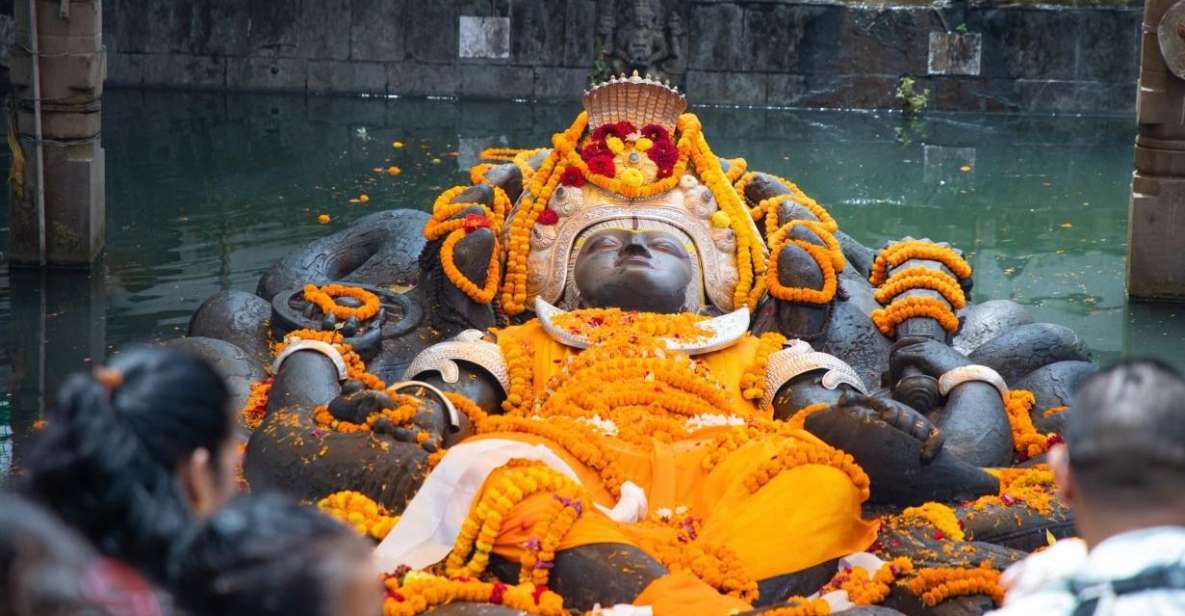
- Kathmandu is home to ancient temples like Pashupatinath and Budhanilkantha, reflecting rich Hindu heritage and cultural significance.
- Pashupatinath Temple, a UNESCO World Heritage Site, features exquisite architecture and daily sacred rituals.
- Budhanilkantha is renowned for its 5-meter reclining Vishnu statue, attracting pilgrims seeking peace and protection.
- Dakshinkali Temple, dedicated to Goddess Kali, is vibrant during festivals like Dashain, with ancient rituals and colorful offerings.
- Architectural features of these temples showcase intricate craftsmanship, symbolizing spiritual connections and enhancing the worship experience.
It's also worth checking out some other tours and experiences nearby.
Historical Context of Kathmandu Temples
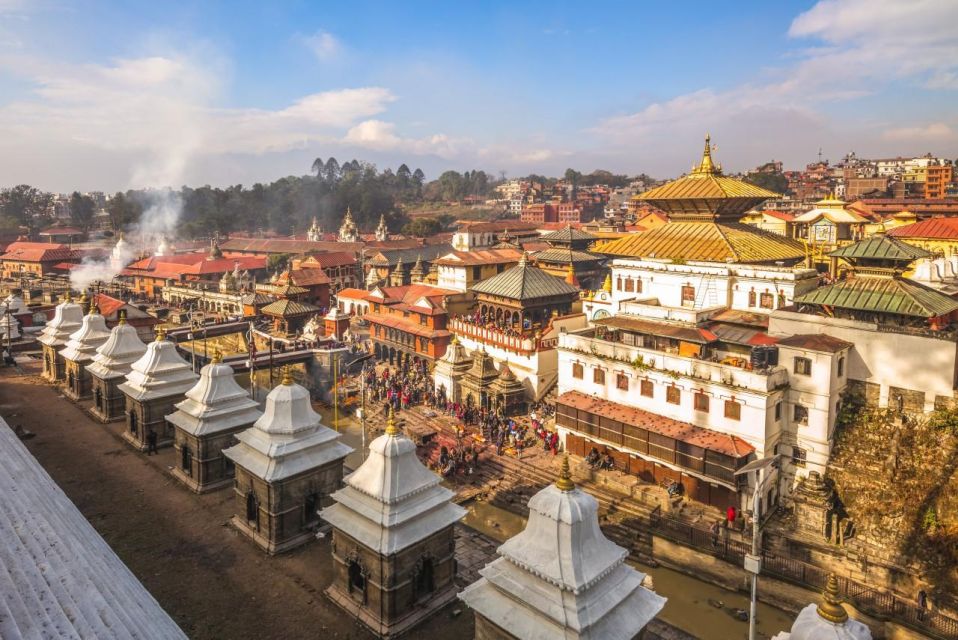
Kathmandu’s temples, dating back centuries, reflect the city’s rich history and the profound influence of Hinduism on its cultural landscape. Each temple tells a story, showcasing intricate architecture and artistry that demonstrate the skilled craftsmanship of their time.
The temples served not only as places of worship but also as community centers, fostering social cohesion among locals. Many of these sacred sites were built during the Malla dynasty, a period known for its cultural flourishing.
Temples like Pashupatinath and Budhanilkantha embody deep spiritual significance, attracting pilgrims from around the world. Today, these historic sites continue to be vital to Kathmandu’s identity, bridging the past with the present as they draw visitors eager to explore their profound heritage.
Pashupatinath Temple Overview
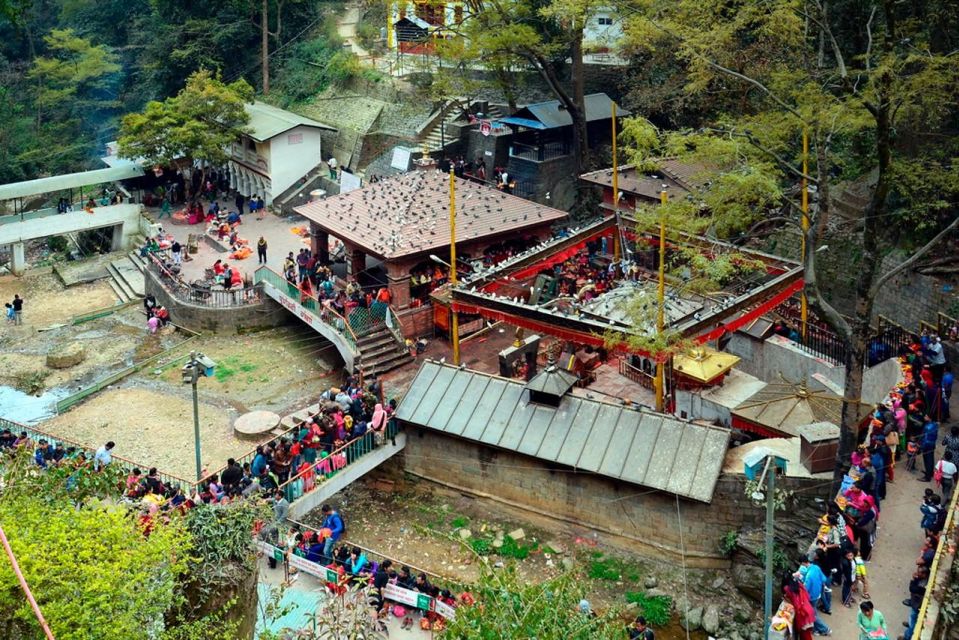
Pashupatinath Temple stands as one of the most revered Hindu shrines in Nepal, drawing countless pilgrims and visitors who come to witness its stunning architecture and spiritual significance.
Nestled on the banks of the Bagmati River, this UNESCO World Heritage Site showcases a vibrant tapestry of religious devotion and artistry.
The temple features exquisite pagoda-style architecture adorned with intricate carvings.
Sacred rituals are performed daily, filling the air with spiritual energy.
Visitors can hear the enchanting sound of temple bells ringing melodiously.
During festivals, colorful processions attract devotees from afar.
The serene presence of sadhus (holy men) offering blessings adds to the temple’s spiritual atmosphere.
This temple not only serves as a spiritual hub but also as a vital cultural landmark, reflecting the rich heritage of Nepal’s Hindu community.
Significance of Budhanilkantha
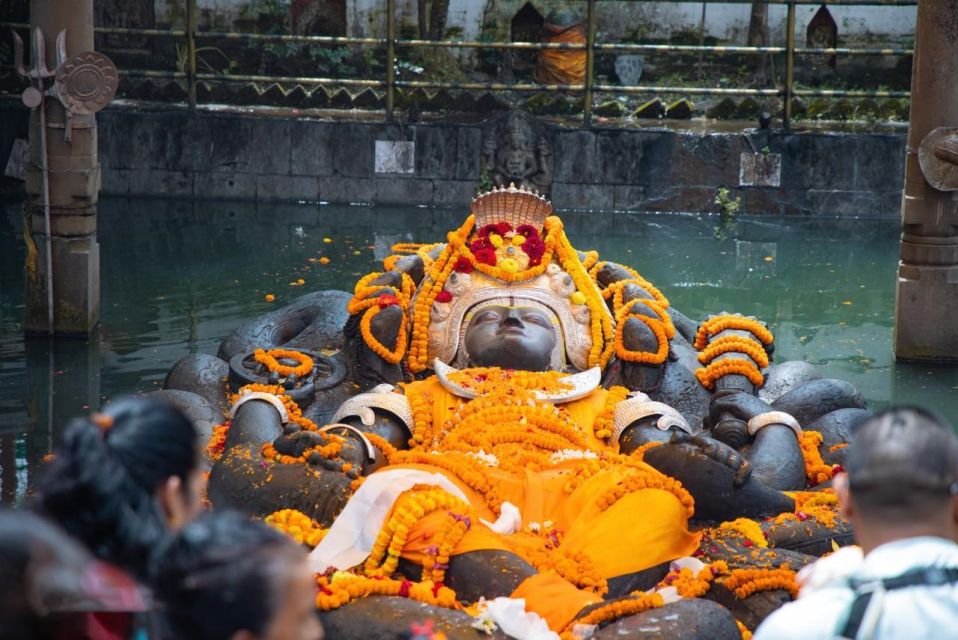
Budhanilkantha Temple, known for its remarkable 5-meter reclining statue of Vishnu, plays a significant role in the spiritual landscape of Nepal, drawing worshippers and visitors eager to experience its serene atmosphere and profound artistry. The temple’s tranquil setting, surrounded by lush greenery and a sacred pond, enhances its reverence. Pilgrims come to pay homage, believing that Vishnu’s presence brings peace and protection.
| Element | Description | Symbolism |
|---|---|---|
| Statue of Vishnu | Reclining figure in a lotus pond | Cosmic balance and peace |
| Surrounding Nature | Lush trees and serene waters | Spiritual tranquility |
| Pilgrimage Rituals | Offerings and prayers | Devotion and devotion |
This sacred site embodies deep cultural significance, connecting past and present through its timeless devotion.
Exploring Dakshinkali Temple
Nestled southwest of the city, Dakshinkali Temple stands as a vibrant hub of devotion, drawing countless pilgrims who seek blessings from the fierce Goddess Kali. This sacred site is particularly bustling during Dashain, Nepal’s largest festival, when worshippers flock to partake in ancient rituals.
Visitors can experience:
-
The rhythmic chants echoing through the temple grounds.
-
Colorful offerings of flowers and fruits adorning the altar.
-
The intense atmosphere as devotees perform rituals.
-
The sight of live chickens, symbolizing sacrifices made for blessings.
-
The lush greenery surrounding the temple, enhancing its spiritual allure.
At Dakshinkali, the blend of devotion and tradition creates an unforgettable experience, highlighting the deep cultural roots of Hinduism in Nepal.
Architectural Features of Temples
The architectural features of Kathmandu’s ancient temples reflect a stunning blend of intricate craftsmanship and deep spiritual symbolism, showcasing the rich heritage of Hindu culture in the region.
These temples often exhibit ornate carvings, intricate woodwork, and striking stone sculptures that depict various deities and mythological scenes. The tiered roofs, commonly seen in temples like Pashupatinath, emphasize their verticality, symbolizing a connection between the earth and the heavens.
Plus, the vibrant colors and detailed murals embellish temple exteriors, inviting devotees and visitors alike. Sacred spaces within the temples, such as sanctums and courtyards, create a serene atmosphere for worship.
Pilgrimage Practices and Festivals
Kathmandu’s ancient temples not only showcase architectural brilliance but also serve as vibrant centers for pilgrimage practices and festivals, drawing thousands of devotees each year.
Pilgrims often flock to these sacred sites, seeking blessings and participating in rich cultural traditions that enhance their spiritual journeys.
Colorful processions filled with traditional music and dance, devotees offering flowers and fruits at temple altars, rituals performed by priests invoking divine blessings, festive decorations illuminating the temple grounds, and the aroma of incense wafting through the air are all part of the experience.
These activities not only strengthen communal bonds but also preserve age-old traditions, making each temple a living testament to the devotion and cultural heritage of the Nepalese people.
Cultural Heritage Preservation Efforts
Cultural heritage preservation efforts in Kathmandu focus on safeguarding its ancient temples and the rich traditions they embody. Various local organizations, government bodies, and international NGOs collaborate to restore and maintain these historic sites.
They conduct regular assessments to identify structural weaknesses and prioritize urgent repairs. Community involvement plays a crucial role, as residents often engage in volunteer work to help restore their temples.
Educational programs raise awareness about the cultural significance of these sites, fostering a sense of pride among locals. Plus, conservation techniques blend traditional craftsmanship with modern technology, ensuring the temples endure for future generations.
These comprehensive efforts aim to protect Kathmandu’s invaluable heritage while promoting sustainable tourism practices that respect the cultural landscape.
Visitor Tips for Temple Tours
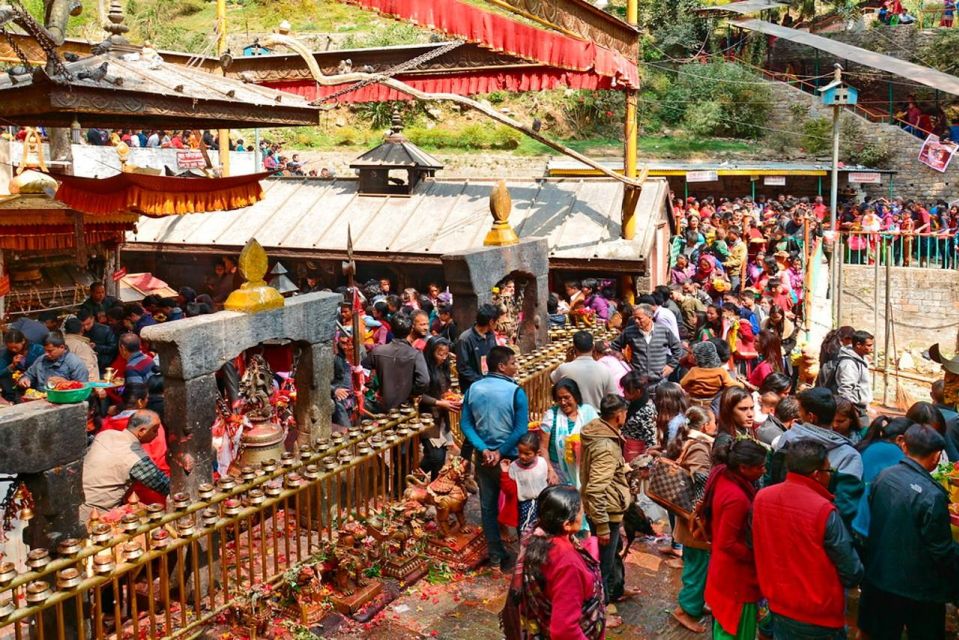
Exploring the ancient temples in Kathmandu offers visitors a unique glimpse into the rich spiritual and architectural heritage of the region.
To make the most of their temple tours, visitors should keep a few tips in mind:
-
Dress modestly, covering shoulders and knees, to show respect.
-
Arrive early to avoid crowds and enjoy a peaceful atmosphere.
-
Engage with local guides to uncover fascinating stories behind the structures.
-
Capture moments with a camera, but be mindful of restricted areas.
-
Participate in rituals to enhance the spiritual experience.
Here's a few more nearby tours and experiences we think you'll like.
Frequently Asked Questions
What Are the Best Times to Visit These Temples?
The best times to visit these temples are early mornings or late afternoons. During these hours, visitors enjoy cooler weather, fewer crowds, and the opportunity to witness stunning sunrises or sunsets enhancing the spiritual ambiance.
Are There Dress Codes for Visiting the Temples?
When visiting temples, travelers should dress modestly, covering shoulders and knees. Many temples require visitors to remove shoes as a sign of respect, so it’s wise to wear comfortable footwear for easy removal.
Is Photography Allowed Inside the Temple Premises?
Visitors should be aware that photography policies vary by temple. While some allow it, others don’t. It’s best to check specific rules upon arrival to respect the sacred atmosphere and local customs.
What Languages Do the Tour Guides Speak?
The tour guides speak several languages, including English, French, Japanese, Chinese, and Hindi. Their diverse language skills ensure that participants from different backgrounds can fully engage and appreciate the cultural insights shared during the experience.
How Can I Reach the Temples Independently?
To reach the temples independently, travelers can use public transportation or hire taxis. Locals often provide helpful directions, ensuring visitors navigate easily and enjoy the rich cultural experience of the area.
Not for you? Here's more of our most recent tour reviews happening neaby
- Travel Agency, Tour and Outdoor Activities
- 15 Days Classical Everest Base Camp Trek
- Annapurna Base Camp Trek
- Luxury Nepal Tour With Major Cities
- Mardi Himal Trek – 12 Days
- Annapurna Circuit Trek
- Everest Base Camp Trek
- 29-DAY Rejuvenating and Life Changing Yoga Class in Nepal
- From Kathmandu: Bungee Jumping Day Trip
- Day Hiking Including Nagarkot Sunrise
- Nagarkot Nights : A Night of Luxury, Mountains & Sunrise
- Rafting in Trishuli
- Thamel: Trishuli River Rafting Tour With Transfers and Lunch
- Bhaktapur Old City and Durbar Square Half-Day Tour
- Langtang Gosainkunda Lake Trek: 10 Days Guided Langtang Trek
Recap
The ancient Hindu temples in Kathmandu stand as vibrant testaments to the city’s rich spiritual and cultural tapestry.
From the revered Pashupatinath to the serene Budhanilkantha, each temple offers a glimpse into Nepal’s artistic heritage and communal practices.
As pilgrims and visitors explore these sacred sites, they not only connect with the past but also contribute to the ongoing preservation of these remarkable traditions.
Ultimately, Kathmandu’s temples invite everyone to experience their timeless beauty and profound significance.
